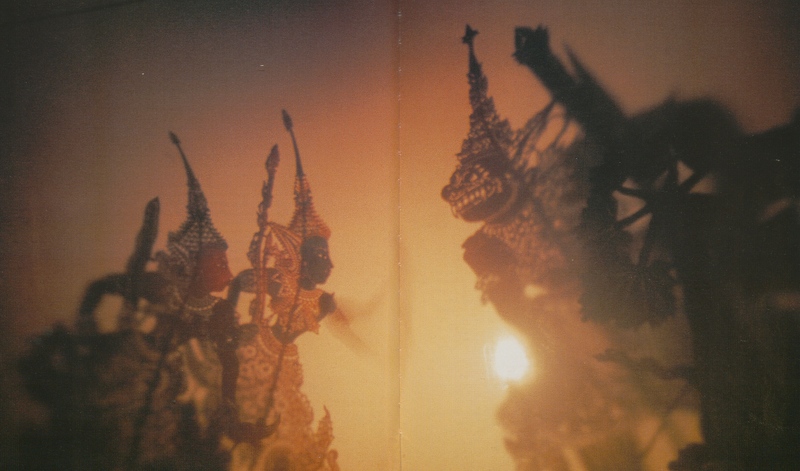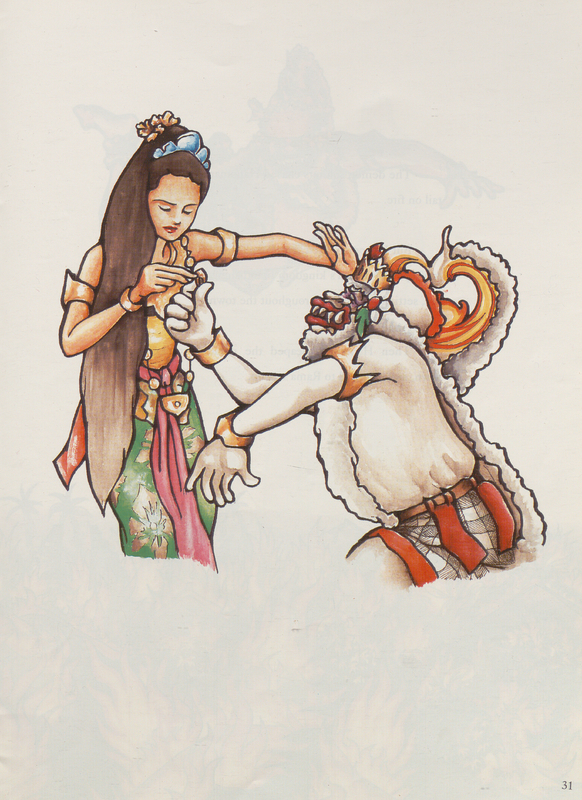Bali
The illustration below comes from a Balinese kecak book. Kecak is a style of Balinese dance and drama that tells the story of the Ramayana. Rhythmic chants and dances have long been a part of Balinese tradition, but kecak is a newer addition. The dance, which is typically performed by men, was developed in the 1930s by German expatriat and artist Walter Spies.
As for the story, it is very similar to the Valmiki version, with a few exceptions. As expected, several of the spellings are different — Hanuman becomes Hanoman, Lanka becomes Langka, Ravana becomes Rawana. A plot difference involves the heroism of a supporting character. In the Valmiki Ramayana, Jatayus is a noble vulture who tries to stop Sita from being kidnapped by Ravana. He flies after Ravana's chariot and attacks the evil rakshasa, but is badly injured. Moments before his last breath, Jatayu tells Rama and Lakshmana what happened, allowing them to better prepare to rescue Sita.
In the Balinese version, Jatayu still yets a moment of heroism, but it occurs at a different point in the epic. When Rama and Laksmana are on their way to Langka, a son of Rawana attacks them, trapping them inside the coils of a gargantuan serpent. Jatayu comes to the rescue by pecking the serpent, allowing the brothers to escape unharmed.

Malaysia

